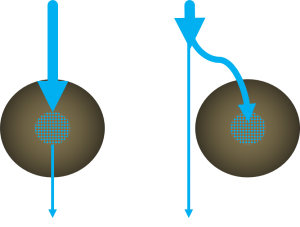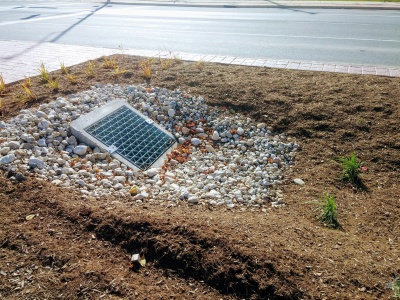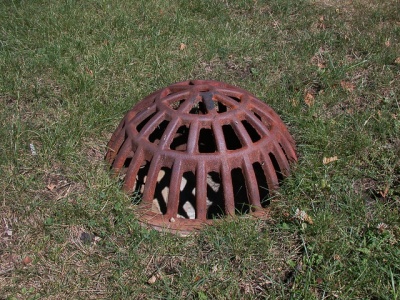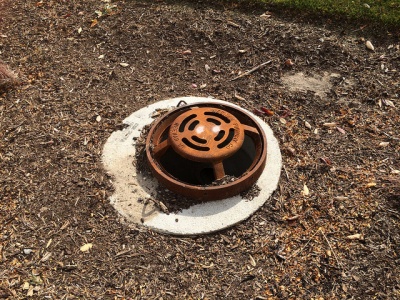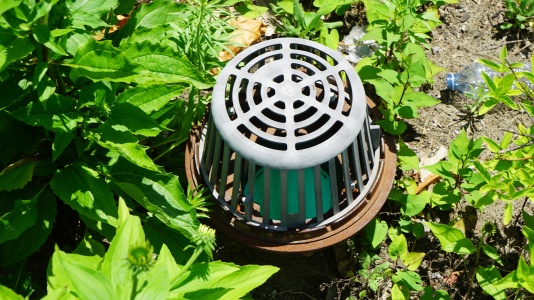Difference between revisions of "Bioretention"
Dean Young (talk | contribs) |
Dean Young (talk | contribs) (→Karst) |
||
| Line 125: | Line 125: | ||
Designers should consult local utility design guidance for the horizontal and vertical clearances required between storm drains, ditches, and surface water bodies. | Designers should consult local utility design guidance for the horizontal and vertical clearances required between storm drains, ditches, and surface water bodies. | ||
===Karst=== | ===Karst=== | ||
| − | Infiltration designs are unsuitable in areas of known or implied karst topography and geologic formations. | + | Infiltration designs are unsuitable in areas of known or implied [[Karst |karst topography and geologic formations]]. |
| + | |||
===Overhead Wires=== | ===Overhead Wires=== | ||
Check whether the future tree canopy height in the bioretention area will interfere with existing overhead wires. | Check whether the future tree canopy height in the bioretention area will interfere with existing overhead wires. | ||
Revision as of 21:12, 4 April 2022
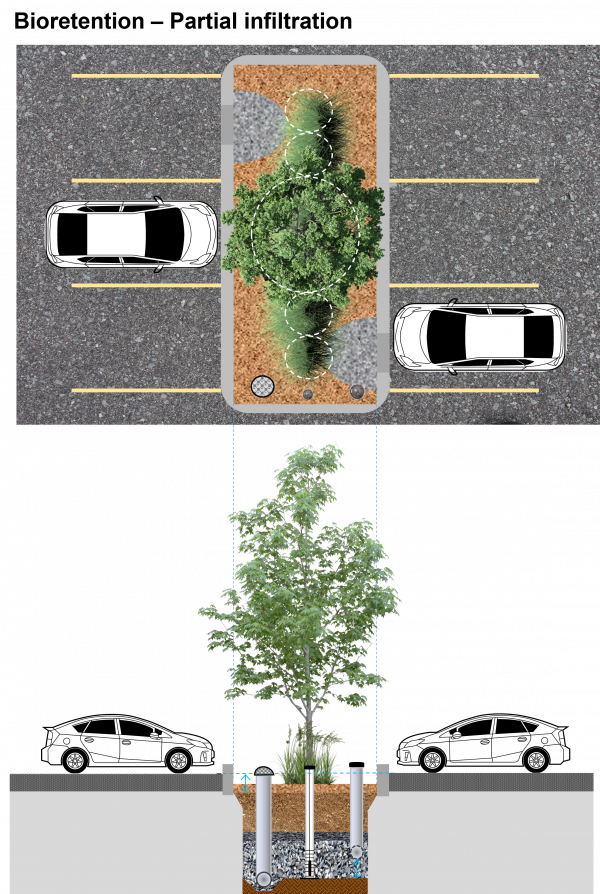
Bioretention refers to vegetated stormwater practices that temporarily store roof and pavement runoff in depressed planting beds or vertical-walled structures.
Depending on native soil infiltration rate and physical constraints, the facility may be designed without an underdrain for full infiltration, with an underdrain for partial infiltration, or with an impermeable liner and underdrain for no infiltration, "filtration only" (i.e., a stormwater planter or biofilter) design.
Bioretention can be adapted to fit into many different development contexts and provides a convenient area for snow storage and treatment.
This article is about full and partial infiltration design variations that capture and infiltrate some or all of the stormwater received.
For simple systems, without underdrains or storage reservoirs (typically found in residential settings), see Rain gardens.
For linear systems that have a gradually sloping filter media bed and convey flow, but are otherwise similar to bioretention, see Bioswales.
For planted systems that do not infiltrate water, see Stormwater planters.
Overview[edit]
Bioretention systems may be the most well recognized form of low impact development (LID). They can fit into any style of landscape and utilize all of the stormwater treatment mechanisms: sedimentation, infiltration, filtration, attenuation and evapotranspiration.
Bioretention is an ideal technology for:
- Fitting multi-functional vegetation into urban landscapes
- Treating runoff collected from nearby impervious surfaces
Take a look at the downloadable Bioretention Factsheet below for a .pdf overview of this LID Best Management Practice:
The fundamental components of a bioretention cell are:
- Inlets which may be curb openings (e.g. modified curbs, spillways), pipes, road or side inlet catchbasins, trench drains or other pre-fabricated inlet structures;
- A surface ponding area defined by landscaped side slopes or hardscape structures and the invert elevation of the overflow outlet structure;
- A filter bed containing filter media;
- A filter bed surface cover layer (e.g. mulch and stone);
- Plants, and;
- An overflow outlet to limit surface ponding and safely convey excess flow to a downstream storm sewer or the next BMP in the treatment train.
Additional components may include:
- An underdrain to redistribute or remove excess water and access structures or standpipes for periodic inspection and flushing;
- An internal water storage reservoir composed of a reservoir aggregate layer, and may include embedded void-forming structures to minimize depth and conserve aggregate, and organic material derived from untreated wood (aids in dissolved nitrogen removal);
- Monitoring wells installed to the base and screened in the underdrain aggregate to verify and track drainage time; and
- Filter media additives intended to enhance retention of nutrients, metals, petroleum hydrocarbons and/or bacteria.
Planning considerations[edit]
Infiltration[edit]
Some form of stormwater landscaping (bioretention) can be integrated into most spaces. Although there are some constraints to infiltrating water, it is preferable to do so where possible. Designing bioretention without an underdrain is highly desirable wherever the soils permit infiltration at a rate which is great enough to empty the facility between storm events. Volume reduction is achieved primarily through infiltration to the underlying soils, with some evapotranspiration. As there is no outflow from this BMP under normal operating conditions, it is particularly useful in areas where nutrient management is a concern to the watershed.
Bioretention with an underdrain is a popular choice in areas with 'tighter' soils where infiltration rates are < 15 mm/hr. Including a perforated pipe in the reservoir aggregate layer helps to empty the facility between storm events, which is particularly useful in areas with low permeability soils. The drain discharges to a downstream point, which could be an underground infiltration trench or chamber facility. Volume reduction is gained through infiltration and evapotranspiration. By raising the outlet of the discharge pipe the bottom portion of the BMP can only drain through infiltration, creating an internal water storage reservoir. This creates a fluctuating anaerobic/aerobic environment which promotes denitrification. Increasing the period of storage has benefits for promoting infiltration, but also improves water quality for catchments impacted with nitrates. A complimentary technique is to include fresh wood mulch in the storage reservoir aggregate, which fosters denitrifying biological processes.
For more information about constraints to infiltration practices, and approaches and tools for identifying and designing within them see Infiltration.
Where infiltration is infeasible or not permitted, but the design calls for planted landscaping, try a stormwater planter instead.
Native Soil[edit]
Bioretention can be constructed over any soil type, but hydrologic soil group A and B are best for achieving water balance objectives. Facilities designed to infiltrate water should be located on portions of the site with the highest infiltration rates. For infiltration rates <15 mm/h an underdrain is recommended. Native soil infiltration rate at the proposed location and depth should be confirmed through in-situ measurements of hydraulic conductivity under field saturated conditions.
Wellhead Protection[edit]
Facilities receiving road or parking lot runoff should not be located within the 2 year time-of-travel Wellhead Protection Area for municipal drinking water supply wells (refer to applicable drinking water source protection plan for details).
Available Space[edit]
- Reserve open space equal to roughly 10 to 20% the size of the contributing drainage area.
- For optimal performance bioretention facilities should receive runoff from impervious drainage areas between 5 to 20 times their own permeable footprint surface area.
- In the conceptual design stage it is recommended to set aside approximately 10 - 20 % of the contributing drainage area for bioretention facility placement.
- Bioretention cells work best when distributed, so that no one facility receives runoff from more than 0.8 Ha, although there is a trade off to be considered regarding distributed collection and treatment versus ease of maintenance.
- Bioretention can be almost any shape, from having very curvilinear, soft edges with variable depth, to angular, hard-sided and uniform depth.
- For ease of construction and to ensure that the vegetation has adequate space, cells should be no narrower than 0.6 m at any point.
- The maximum width of a facility is determined by the reach of the construction machinery, which must not be tracked into the cell.
- Setback from buildings: A typical four (4) metre setback is recommended from building foundations. If an impermeable liner is used, no setback is needed.
- Proximity to underground utilities and overhead wires: Consult with local utility companies regarding horizontal and vertical clearance required between storm drains, ditches, and surface water bodies. Further, check whether the future tree canopy height in the bioretention area will not interfere with existing overhead wires.
The principles of bioretention can be applied in any scenario where planting or vegetation would normally be found.
Site Topography[edit]
Contributing slopes should be 1 to 5%. The filter bed surface should be flat to allow flow to spread out. A stepped, multi-cell design can also be used.
Available Head[edit]
If an underdrain is used, then an elevation difference of 1 to 1.5 m is needed between the inverts of the inlet and the downstream storm sewer.
Water Table[edit]
Maintaining a separation of 1 m between the elevations of the bottom of the practice and the seasonally high water table, or top of bedrock, is recommended. Lesser or greater values may be considered based on groundwater mounding analysis.
Pollution Hot Spot Runoff[edit]
To prevent groundwater contamination, runoff from pollution hot spots should not be treated by bioretention facilities designed for full or partial infiltration. Filtration only facilities (with an impermeable liner) can be used.
Proximity to Underground Utilities[edit]
Designers should consult local utility design guidance for the horizontal and vertical clearances required between storm drains, ditches, and surface water bodies.
Karst[edit]
Infiltration designs are unsuitable in areas of known or implied karst topography and geologic formations.
Overhead Wires[edit]
Check whether the future tree canopy height in the bioretention area will interfere with existing overhead wires.
Setbacks From Buildings[edit]
If an impermeable liner is used, no setback is needed, although designing to maintain drainage away from the building is crucial. Where no liner is used, a setback of 4 m from the building foundations should be applied.
Private sites[edit]
In single family residential sites rain gardens most often take the form of a soft edged, traditional perennial planting bed. As many private industrial, commercial and institutional sites have landscaping around their parking lots, bioretention is an increasingly popular choice to manage stormwater in these contexts.
Streetscape[edit]
Bioretention is a popular choice for making urban green space work harder. Design configurations include extending the cells to accommodate shade trees, and using retrofit opportunities to create complete streets with traffic calming and curb extensions or 'bump outs'. See Bioretention: Streetscapes
Parkland and natural areas[edit]
Naturalized landscaping and soft edges can make a bioretention facility 'disappear' into green space surroundings. In some scenarios, a larger bioretention (50 - 800 m2) cell may be used as an end-of-pipe facility treating both sheet flow and concentrated flow before it enters an adjacent water course. In these larger installations care must be made in the design to distribute the inflow, preventing erosion and maximizing infiltration.
For more information on planning considerations and site constraints see Site considerations.
Design[edit]
| Poor design choice: Limits outflow water quality |
Better design choice: Improves outflow water quality |
|---|---|
| Single large cell design | Several smaller distributed or connected cells |
| Single concentrated inflow | Forebays or distributed flow |
| No pretreatment | Pretreatment provided as part of inlet design |
| Over-sized underdrain | Moderately sized underdrain (or no underdrain) |
| Filter bed < 0.5 m | Filter bed > 0.75 m |
| Filter media Plant-Available Phosphorus > 40 ppm | Filter media Plant-Available Phosphorus < 40 ppm |
| Filter media is predominantly sand | Filter media is a mixture of sand, topsoil and organic material |
| Surface covered with turf grass and stone | Surface covered with mulch and dense, deeply rooting vegetation |
Sizing and Modelling[edit]
Bioretention facilities should be sized to accommodate runoff from approximately 5 to 20 times the footprint area of the facility. i.e. they should have an I/P ratio of 5 to 20. When the drainage area is too large, silt can accumulate very rapidly, overwhelm the pretreatment devices, and lead to clogging of the facility. When the drainage area is relatively small compared to the bioretention facility, it can make the facility unreasonably costly.
Inlets and pretreatment options[edit]
Options for pretreatment include:
- A level spreader, gravel diaphragm or Vegetated filter strip for sheet flow
- A forebay for concentrated surface flow
- An oil and grit separator for concentrated underground flow
Simple (non-treating) inlets include:
- Sheet flow from a pavement edge or flush curb
- One of more curb cuts
- Covered drains
Overflow routing[edit]
Routing[edit]
- Infiltration facilities can be designed to be inline or offline from the drainage system. See figure to the right for an illustration.
- Inline facilities accept all of the flow from a drainage area and convey larger event flows through an overflow outlet. The overflow must be sized to safely convey larger storm events out of the facility. The overflow must be situated at the maximum surface ponding elevation or furthest downgradient end of the facility to limit surface ponding during periods of flow in excess of the facility storage capacity.
- Offline facilities use flow splitters or bypass channels that only allow the design storm runoff storage volume to enter the facility. Higher flows are conveyed to a downstream storm sewer or other BMP by a flow splitting manhole weir or pipe, or when the maximum surface ponding depth has been reached, by by-passing the curb opening and flowing into a downstream catchbasin connected to a storm sewer.
Overflow Elevation[edit]
The invert of the overflow should be placed at the maximum water surface elevation of the practice (i.e. the maximum surface ponding level). A good starting point is 150 to 350 mm above the surface of the mulch cover. However, consideration should be given to public safety, whether or not an underdrain is included, the time required for ponded water to drain through the filter bed surface, and if no underdrain is present, into the underlying native soil (must drain within 48 hours). See Bioretention: Sizing and Stormwater planters for more details.
Freeboard[edit]
- In swales conveying flowing water a freeboard of 300 mm is generally accepted as a good starting point.
- In bioretention the freeboard is the difference between the invert elevation of the inlet and overflow structure. 150 mm will usually suffice, so long as the inlet will not become inundated during design storm conditions.
- In above grade stormwater planters, the equivalent dimension would be the difference between the invert elevation of the lip of the planter and the overflow structure (150 mm minimum).
Overflow Outlet Options[edit]
Metal grates are recommended (over plastic) in all situations.
| Feature | Anti Vandalism/Robust | Lower Cost Option | Self cleaning |
|---|---|---|---|
| Dome grate | x | ||
| Flat grate | x | ||
| Catch basin | x | ||
| Ditch inlet catch basin | x | x | |
| Curb cut | x | x | x |
Gallery[edit]
Flat metal overflow with stone surround to reduce erosion around the cast concrete structure. Mississauga Road, ON
Domed, metal overflow grate. Being flush with the surface reduces potential infiltration of ponded water. Photo credit: Aaron Volkening
Overflow inlet for newly constructed stormwater bioretention areas in median of Bradley Road. Village of Brown Deer, Wisconsin. Bradley Road, east of 51st Street. Photo from October 2015. Constructed summer 2015.
Photo credit: Aaron Volkening
Plant Selection[edit]
The nature of bioretention cells is to attenuate stormwater from rainfall events of varying intensities. For this reason, the vegetation used must be suitable for the varying moisture conditions and is often categorized into three zones related to the grading of the feature.
- Low Zone -- This area is frequently inundated during storm events, and is well-drained between rainfall events.
- Mineral Meadow Marsh plant community.
- Grasses, sedges, rushes, wildflowers, ferns and shrubs that have an ‘obligate’ to ‘facultative’ designation.
- Wetland 'obligate' species that are flood tolerant as they will persist in average years and flourish in wetter years.
- Plants that are likely to occur in wetlands or adjacent to wetlands.
- Plants with dense root structure and /or vegetative cover are favoured for their ability to act as pollution filters and tendency to slow water velocity.
- Be advised these practices are not constructed wetlands and are designed to fully drain within 48 hours.
- Mid Zone -- This zone is inundated less frequently (2 – 100 year storm events) and has periodically high levels of moisture in the soil. The ecology of this zone is a transition from the Mineral Meadow Marsh/Beach-type community to an upland community.
- Plants able to survive in soils that are seasonally saturated, yet can also tolerate periodic drought.
- Species include grasses and groundcovers, as well as low shrub species.
- High Zone -- The ecology of this zone is terrestrial due to its elevation in relation to the filter bed. The zone most closely resembles a Cultural Meadow or a Cultural Thicket community, depending on the mix of grasses, herbaceous material, shrubs and trees utilized.
- Plants should have deep roots for structure, be drought-tolerant and capable of withstanding occasional soil saturation.
- Trees and large shrubs planted in this zone will aid in the infiltration and absorption of stormwater.
- This area can be considered a transition area into other landscape or site areas.
- A variety (min. five) species should be used to avoid monocultures.
Exposure to roadway or parking lot runoff must be considered.
- Exposure to roadway or parking lot runoff
- Select salt tolerant grasses, other herbaceous material and shrubs.
- These can take on several forms, including parking lot islands, traffic islands, roundabouts, or cul-de-sacs and are often used as snow storage locations.
- No exposure to roadway or parking lot runoff
- Practices allow for a greater range of species selection.
- These receive runoff from rooftops or areas that use no deicing salt and have low pollutant exposure, such as courtyard bioretention.
Other selection factors:
- Most bioretention cells will be situated to receive full sun exposure. The ‘Exposure’ column in the plant lists identifies the sun exposure condition for each species.
- Facilities with a deeper filter media bed (e.g., 1 m) provide the opportunity for a wider range of plant species (including trees).
- The inclusion of vegetation with a variety of moisture tolerances ensures that the bioretention cell will adapt to a variety of weather conditions.
- Proper spacing must be provided for above-ground and below-ground utilities, and adjacent infrastructure.
- Where possible, a combination of native trees, shrubs, and perennial herbaceous materials should be used.
- A planting mix with evergreen and woody plants will provide appealing textures and colors year round, but are not appropriate for areas where snow will be stored/piled during winter.
- In areas where less maintenance will be provided and where trash accumulation in shrubbery or herbaceous plants is a concern, consider a “turf and trees” landscaping model.
- If trees are to be used, or the bioretention is located in a shaded location, then ensure that the chosen herbaceous plants are shade tolerant.
- Spaces for herbaceous flowering plants can be included. This may be attractive at a community entrance location or in a residential rain garden.
Tables for identifying ideal species for bioretention are found in the Plant lists. See plant selection and planting design for supporting advice.
Variations of Bioretention Cells[edit]
Below, find three alternate Bioretention cell configurations, that differ based off whether developers want the system to infiltrate incoming water fully, partially, or not at all due to sites which possess contaminated soils or shallow bedrock, and/or zero-lot-line developments (i.e. condo developments and dense urban infill).
All the images below are image map drawings from the following pages to compare side-by-side the differences between varying configurations.
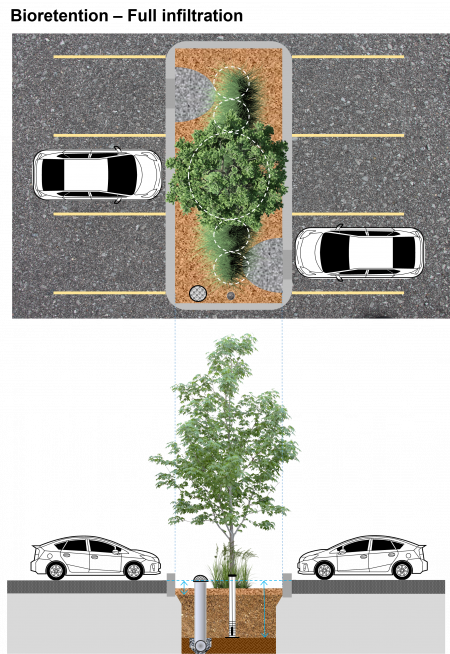
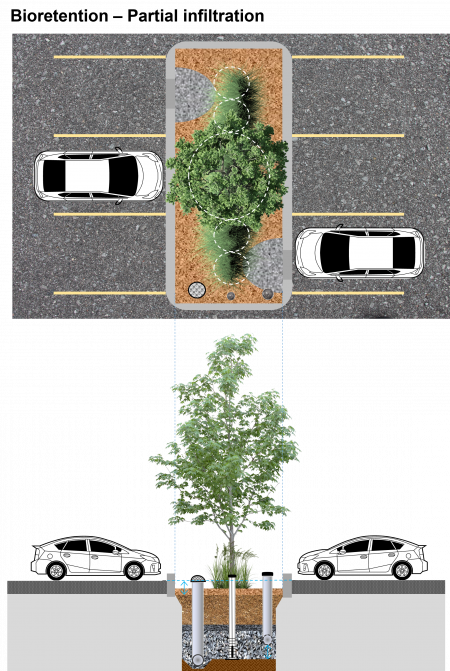
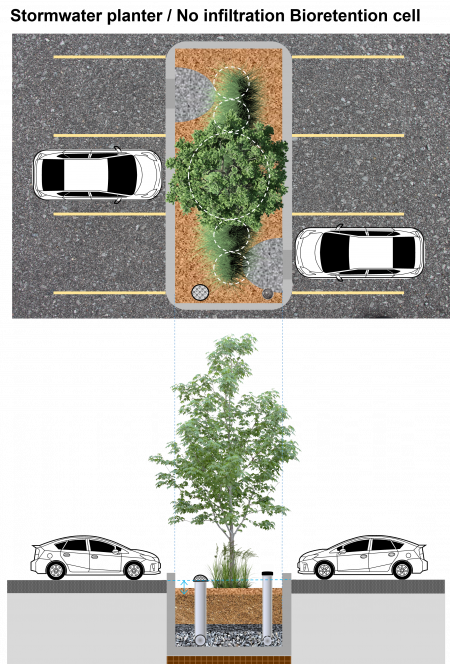
Performance[edit]
| BMP | Water Balance | Water Quality | Erosion Control |
|---|---|---|---|
| Bioretention with no underdrain | Yes | Yes-size for water quality storage requirement | Partial-based on available storage volume and native soil infiltration rate |
| Bioretention with underdrain | Partial-based on available storage, native soil infiltration rate and if a flow restrictor is used | Yes-size for water quality storage requirement | Partial-based on available storage, native soil infiltration rate and if a flow restrictor is used |
| Bioretention with underdrain and liner | No-some volume reduction occurs through evapotranspiration | Yes-size for water quality storage requirement | Partial-some volume reduction occurs through evapotranspiration |
Water Balance[edit]
Bioretention practices have been shown to reduce runoff volume through both means of evapotranspiration and infiltration. The primary body of research is separated into bioretention practices either with underdrains and those without (therefore, relying solely on full infiltration into underlying soils). Volumetric performance improves when:
- Native soils have high infiltration capacity.
- General size of the practice.
- Underdrain is elevated above the native soil and/or a flow restrictor is installed on the underdrain.
| LID Practice | Location | Runoff Reduction* | Reference |
|---|---|---|---|
| Bioretention without underdrain | Connecticut | 99% | Dietz and Clausen (2005) [1] |
| Pennsylvania | 80% | Ermilio (2005)[2] | |
| Pennsylvania | 70% | Emerson and Traver (2004)[3] | |
| China | 85 to 100%* | Gao, et al. (2018)[4] | |
| Bioretention with underdrain | |||
| Texas | 82%* | Mahmoud, et al. (2019)[5] | |
| Virginia | 97 to 99% | DeBusk and Wynn (2011)[6] | |
| China | 35 to 75%* | Gao, et al. (2018)[7] | |
| North Carolina | 40 to 60% | Smith and Hunt (2007)[8] | |
| North Carolina | 33 to 50% | Hunt and Lord (2006). [9] | |
| Maryland and North Carolina | 20 to 50% | Li et al. (2009). [10] | |
| Ohio | 36 to 59% | Winston et al. (2016). [11] | |
| Bioretention with underdrain & liner | |||
| Ontario | 15 to 34% | STEP (2019) [12] | |
| Maryland | 49 to 58% | Davis (2008). [13] | |
| Queensland, Australia | 33 to 84% | Lucke and Nichols (2015). [14] | |
| Victoria, Australia | 15 to 83% | Hatt et al. (2009). [15] | |
| Runoff Reduction Estimate* | 85% without underdrain;
45% with underdrain | 30% with underdrain and liner | ||
Water Quality[edit]
Performance results from both laboratory and field studies indicate that bioretention systems have the potential to be one of the most effective BMPs for pollutant removal (TRCA, 2009). Bioretention provides effective removal for many pollutants as a result of sedimentation, filtering, soil adsorption, microbial processes and plant uptake. It is also important to note that there is a relationship between the water balance and water quality functions. If a bioretention cell infiltrates and evaporates 100% of the runoff from a site, then there is essentially no pollution leaving the site in surface runoff. Furthermore, treatment of infiltrated runoff continues to occur as it moves through the native soil.
A comparative performance assessment of bioretention in Ontario was conducted comparing 9 different bioretention facilities in the GTA. The results showed total suspended solids (TSS) concentration reductions between 73 to 99%. (STEP, 2019)[16]. Other STEP studies in the Greater Toronto Area have displayed similar results, with 90% reduction in TSS when compared to nearby asphalt runoff samples having median TSS concentrations below the provincial 30 mg/L standard (median = ~19 mg/L) STEP, 2014[17].
Another group of studies of bioretention facilities examines nutrient removal of these LID installation, with mixed results. Some facilities have been observed to increase total phosphorus in infiltrated water (Dietz and Clausen, 2005[18]; Hunt et al., 2006[19] ; TRCA, 2008[20]). These findings have been attributed to leaching from filter media soil mixtures which contained high phosphorus content. To avoid phosphorus export, the phosphorus content (i.e., Phosphorus Index) of the filter media soil mixture should be examined prior to installation and kept between 10 to 30 ppm (Hunt and Lord, 2006[21]). While moderate reductions in total nitrogen and ammonia nitrogen have been observed in laboratory studies (Davis et al., 2001[22]) and field studies (Dietz and Clausen, 2005[23]), nitrate nitrogen has consistently been observed to be low. Little data exists on the ability of bioretention to reduce bacteria concentrations, but preliminary laboratory and field study results report good removal rates for fecal coliform bacteria (Rusciano and Obropta, 2005; Hunt et al., 2006[24]; TRCA, 2008[25]).
Recent research into the role of plants in bioretention confirms they play an important roles in hydraulic and nitrogen removal performance. In a recent review of scientific literature, Dagenais et al. (2018) found that planted facilities are more effective than unplanted ones, as the presence of plants increases filter bed permeability and nitrogen removal. Plant species selection can considerably affect hydraulic and nitrogen removal performance, with root traits (e.g., thickness and depth) identified as playing important roles. They identified further research needed to test the hypothesis that native or diversely-planted facilities perform better than ones planted with exotic or fewer species.[26]
Stream Channel Erosion[edit]
The feasibility of storing the channel erosion control volume within bioretention areas will be dependent on the size of the drainage area and available space. It may prove infeasible due to the large footprint needed to maintain the recommended maximum ponding depth of 200 mm. Meeting the channel erosion control requirement through bioretention is most feasible in the regions of the Greater Toronto Area with A and B soils. In these situations, the reduction in runoff volume through infiltration and evapotranspiration may be sufficient. It is important to note that the bioretention practice will infiltrate runoff throughout the course of the storm; so the actual capacity of the bioretention cell to capture runoff from the drainage area will be larger than its designed storage volume.
Other Benefits[edit]
The benefits of bioretention reach beyond the specific stormwater management goals to other social and environmental benefits, including:
- Reduced thermal aquatic impacts: Bioretention and other filtration and infiltration practices benefit aquatic life by reducing thermal impacts on receiving waters from urban runoff (Jones and Hunt, 2009[27]). Unlike detention ponds, bioretention does not raise water temperature and can help maintain baseflows through infiltration.
- Snow Storage: Bioretention areas can be used for snow storage and snow melt treatment from the contributing drainage area during winter, especially those located adjacent to parking lots and roadways. To function as snow storage, bioretention must include an overflow for snow melt in excess of the designed ponding depth. Additionally, the plant material must be salt-tolerant, perennial and tolerant of periodic inundation.
- Reduced Urban Heat Island: Bioretention is able to reduce the local urban heat island by introducing soils and vegetation into urban areas, such as parking lots. Vegetation absorbs less solar radiation than hard urban surfaces. Also, the water vapor emitted by plant material also cools ambient temperatures.
See also[edit]
External links[edit]
- City of Toronto Green Streets Technical Guidelines - Version 1.0 (2017) Schollen & Company Inc., Urban Forest Innovators, TMIG, DMG
- CSA W200-18 Design of Bioretention Systems (2018) CSA Group
- CSA W201-18 Construction of Bioretention Systems (2018) CSA Group
- Bioretention Design Guidelines (2014) Healthy Waterways (Australia)
- ↑ Dietz, M.E. and J.C. Clausen. 2005. A field evaluation of rain garden flow and pollutant treatment. Water Air and Soil Pollution. Vol. 167. No. 2. pp. 201-208. http://citeseerx.ist.psu.edu/viewdoc/download?doi=10.1.1.365.9417&rep=rep1&type=pdf
- ↑ Ermilio, J.F., 2005. Characterization study of a bio-infiltration stormwater BMP (Doctoral dissertation, Villanova University). https://www1.villanova.edu/content/dam/villanova/engineering/vcase/vusp/Ermilio-Thesis06.pdf
- ↑ Emerson, C., Traver, R. 2004. The Villanova Bio-infiltration Traffic Island: Project Overview. Proceedings of 2004 World Water and Environmental Resources Congress (EWRI/ASCE). Salt Lake City, Utah, June 22 – July 1, 2004. https://ascelibrary.org/doi/book/10.1061/9780784407370
- ↑ Gao, J., Pan, J., Hu, N. and Xie, C., 2018. Hydrologic performance of bioretention in an expressway service area. Water Science and Technology, 77(7), pp.1829-1837.
- ↑ Mahmoud, A., Alam, T., Rahman, M.Y.A., Sanchez, A., Guerrero, J. and Jones, K.D. 2019. Evaluation of field-scale stormwater bioretention structure flow and pollutant load reductions in a semi-arid coastal climate. Ecological Engineering, 142, p.100007. https://www.sciencedirect.com/science/article/pii/S2590290319300070
- ↑ DeBusk, K.M. and Wynn, T.M., 2011. Storm-water bioretention for runoff quality and quantity mitigation. Journal of Environmental Engineering, 137(9), pp.800-808. https://www.webpages.uidaho.edu/ce431/Articles/DeBusk-ASCE-2011.pdf
- ↑ Gao, J., Pan, J., Hu, N. and Xie, C., 2018. Hydrologic performance of bioretention in an expressway service area. Water Science and Technology, 77(7), pp.1829-1837.
- ↑ Smith, R and W. Hunt. 2007. Pollutant removals in bioretention cells with grass cover. Proceedings 2nd National Low Impact Development Conference. Wilmington, NC. March 13-15, 2007.
- ↑ Hunt, W.F. and Lord, W.G. 2006. Bioretention Performance, Design, Construction, and Maintenance. North Carolina Cooperative Extension Service Bulletin. Urban Waterways Series. AG-588-5. North Carolina State University. Raleigh, NC.
- ↑ Li, H., Sharkey, L.J., Hunt, W.F., and Davis, A.P. 2009. Mitigation of Impervious Surface Hydrology Using Bioretention in North Carolina and Maryland. Journal of Hydrologic Engineering. Vol. 14. No. 4. pp. 407-415.
- ↑ Winston, R.J., Dorsey, J.D. and Hunt, W.F. 2016. Quantifying volume reduction and peak flow mitigation for three bioretention cells in clay soils in northeast Ohio. Science of the Total Environment, 553, pp.83-95.
- ↑ STEP. 2019. Comparative Performance Assessment of Bioretention in Ontari0. Technical Brief. https://sustainabletechnologies.ca/app/uploads/2019/10/STEP_Bioretention-Synthesis_Tech-Brief-New-Template-2019-Oct-10.-2019.pdf.
- ↑ Davis, A.P. 2008. Field performance of bioretention: Hydrology impacts. Journal of hydrologic engineering, 13(2), pp.90-95. https://ascelibrary.org/doi/abs/10.1061/(ASCE)1084-0699(2008)13:2(90)
- ↑ Lucke, T., & Nichols, P. W. B. 2015. The pollution removal and stormwater reduction performance of street-side bioretention basins after ten years in operation. Science of The Total Environment, 536, 784-792. doi:http://dx.doi.org/10.1016/j.scitotenv.2015.07.142
- ↑ Hatt, B. E., Fletcher, T. D., & Deletic, A. 2009. Hydrologic and pollutant removal performance of stormwater biofiltration systems at the field scale. Journal of Hydrology, 365(3), 310-321. doi:http://dx.doi.org/10.1016/j.jhydrol.2008.12.001
- ↑ STEP. 2019. Comparative Performance Assessment of Bioretention in Ontario - Technical Brief.
- ↑ STEP. 2014. Performance Evaluation of a Bioretention System - Earth Rangers. Prepared by Toronto and Region Conservation. September 2014. https://sustainabletechnologies.ca/app/uploads/2014/09/STEP-Bioretention-Report_2014.pdf
- ↑ Dietz, M.E. and J.C. Clausen. 2005. A field evaluation of rain garden flow and pollutant treatment. Water Air and Soil Pollution. Vol. 167. No. 2. pp. 201-208.
- ↑ Hunt, W.F. and W.G. Lord. 2006. Bioretention Performance, Design, Construction, and Maintenance. North Carolina Cooperative Extension Service Bulletin. Urban Waterways Series. AG-588-5. North Carolina State University. Raleigh, NC
- ↑ . Performance Evaluation of Permeable Pavement and a Bioretention Swale, Seneca College, King City, Ontario. Prepared under the Sustainable Technologies Evaluation Program (STEP). Toronto, Ontario.
- ↑ Hunt, W.F. and W.G. Lord. 2006. Bioretention Performance, Design, Construction, and Maintenance. North Carolina Cooperative Extension Service Bulletin. Urban Waterways Series. AG-588-5. North Carolina State University. Raleigh, NC
- ↑ Davis, A., M. Shokouhian, H. Sharma and C. Minami. 2001. Laboratory Study of Biological Retention for Urban Stormwater Management. Water Environment Research. 73(5): 5-14.
- ↑ Dietz, M.E. and J.C. Clausen. 2005. A field evaluation of rain garden flow and pollutant treatment. Water Air and Soil Pollution. Vol. 167. No. 2. pp. 201-208.
- ↑ Hunt, W.F., A.R. Jarrett, J.T. Smith, and L.J. Sharkey. 2006. Evaluating Bioretention Hydrology and Nutrient Removal at Three Field Sites in North Carolina. ASCE Journal of Irrigation and Drainage Engineering. 132(6): 600-608.
- ↑ . Performance Evaluation of Permeable Pavement and a Bioretention Swale, Seneca College, King City, Ontario. Prepared under the Sustainable Technologies Evaluation Program (STEP). Toronto, Ontario.
- ↑ Dagenais, D., Brisson, J. and Fletcher, T.D. 2018. The role of plants in bioretention systems; does the science underpin current guidance?. Ecological Engineering, 120, pp.532-545. http://www.phytotechno.com/wp-content/uploads/2018/10/Dagenais-2018-Bioretention.pdf
- ↑ Jones, M.P. and Hunt, W.F. 2009. Bioretention Impact on Runoff Temperature in Trout Sensitive Waters. Journal of Environmental Engineering. Vol. 135. No. 8. Pp. 577-585.

